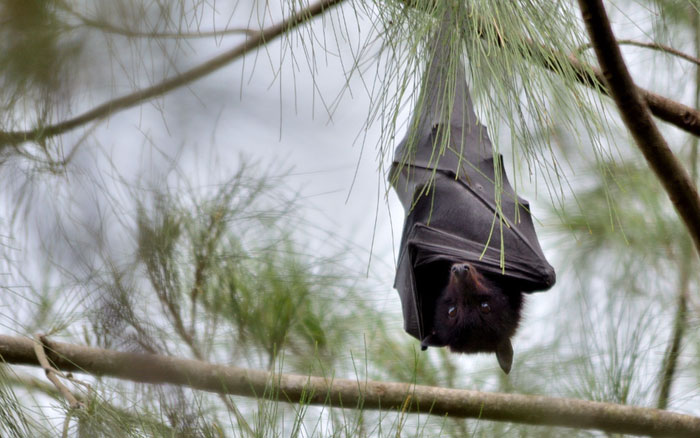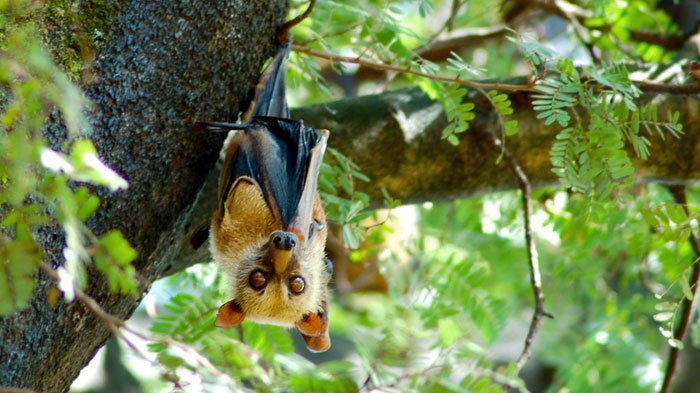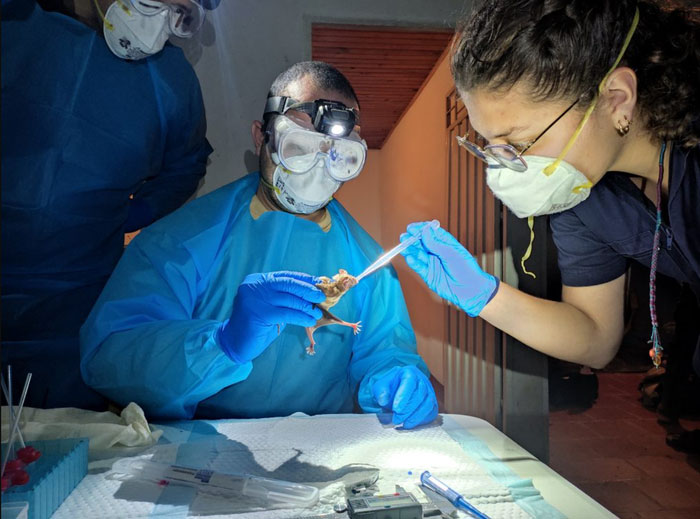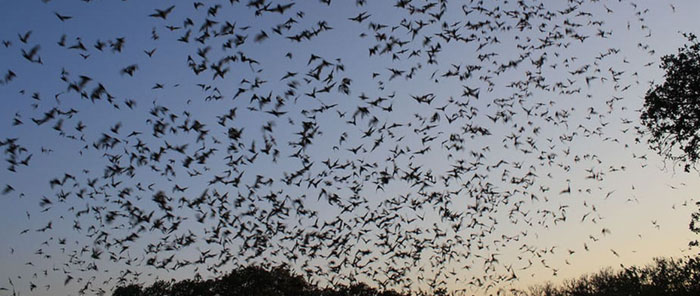After studying bats, a group of scientists discovered the transmission mechanism of the Hendra virus from flying foxes, a rare but dangerous virus.
“Hey, can you spread your wings a bit so I can study you?” Peggy Eby whispered to a colony of bats at Centennial Park, Sydney. Talking to animals seems to have become part of her job.

Bats that are nutritionally deficient may spread disease-causing viruses more.
Peggy Eby is an ecologist at the University of New South Wales in Sydney, Australia. She specializes in wildlife research. Today, Eby is searching for female bats and their newborn pups, but the overcast weather forces the young ones to snuggle under their mother’s wings.
She has studied the species known as the “flying fox” for about 25 years. With binoculars, Eby can check which mother bats are preparing to wean their young. From there, she seeks to establish a link between nutrition and the disease-causing potential of bats. Because nutritionally deficient bats may be more likely to spread disease-causing viruses.
The flying foxes in Australia (relatives of the black flying fox) are “of particular concern” because their bodies harbor a virus called Hendra, a rare entity that can be fatal in up to 50% of cases, meaning one in two infected individuals may die. Like SARS-CoV and SARS-CoV-2, Hendra is also a virus transmitted from bats to humans, but not directly; it occurs through an intermediary species.
After in-depth investigations, Eby and her colleagues can now predict when Hendra will expand its “operational range” globally. Emily Gurley, an infectious disease epidemiologist at Johns Hopkins University, stated: “They have identified environmental factors influencing transmission, and they know how to prevent these events from occurring.”

The Hendra virus in flying foxes does not directly infect humans but does so through an intermediary species.
Food Scarcity
Researchers found that the Hendra virus infection rate increases when bats are food deficient. Food scarcity often occurs after the El Niño phenomenon in the tropical Pacific, which is also linked to drought conditions across eastern Australia. Flying foxes seek food from certain plant species during winter. If these plants can bloom and reproduce immediately after food shortages, the spread of the virus will not occur.
But it’s not that simple. Raina Plowright, a research ecologist at Cornell University in New York, commented: “Unfortunately, the issue is that winter habitats are no longer available.”
Sarah Cleaveland, a veterinarian and infectious disease ecologist at the University of Glasgow in the UK, expressed particular interest in the new findings. The research takes a holistic approach, considering not only the impacts of climate, environment, food sources, and nutrition but also the ecosystem that bats create. The results of the study could help Cleaveland gain deeper insights into other pathogens, including Nipah, Ebola, and related viruses.

Comprehensive studies help the research team understand other pathogens.
Urban Migration
The Hendra virus was first identified in 1994 at a horse training facility in Australia. At that time, several horses and their trainers died from a lung disease accompanied by hemorrhagic signs. Studies identified that the virus was transmitted from the flying fox (Pteropus alecto). They excrete feces, urine, and saliva-laden food on pastures. Horses graze and become infected, then transmit the disease to humans. The disease typically occurs in winter and on a small scale, with some herds of horses infected, and then a few years later, the virus appears in another herd. However, cases have shown a steady increase since the early 2000s.
To study the transmission mechanism, Eby and her research team collected data on the location, timing of events, bat health, climate, nectar shortage, and habitat loss. The study area spanned approximately 300,000 km² in southeastern Australia from 1996 to 2020. They then used models to identify which factors were related to the transmission effects.
The research results revealed details about how bats change their behavior and living habits. The flying foxes have transitioned from a nomadic lifestyle (moving in large groups from one rainforest to another in search of nectar) to settling in small groups in urban and agricultural areas. In other words, they are moving to areas inhabited by horses and humans. From 2000 to 2020, the number of bat colonies in populated areas tripled.
Another study found that these bat colonies spread the Hendra virus every winter, but if food is scarce in subsequent years, bats will shed more viruses. Typically, winter is when the virus is spread most severely and intensely.
The Quest for Sweet Nectar
Research models show that when food is scarce, bat populations split into smaller groups, migrating to agricultural areas near horse stables in search of food. To conserve energy, the bats fly shorter distances.
Although it was possible to predict about two years in advance, the research team was surprised by the events of 2020. Specifically, El Niño occurred in 2018, followed by a drought-filled 2019. Logically, 2020 was expected to be a year when the virus would “thrive.” However, only a single outbreak was detected in May. After reviewing and calculating all possible hypotheses, they found that the rainforests would have significant flowering events in the winter following each food shortage. This was the reason that widespread transmission was prevented. In 2020, flowers bloomed in the Eucalyptus forests near Gympie, Australia, attracting 240,000 bats. Similar flowering events occurred in 2021 and 2022.

Large migrations of bats to rainforests help reduce the risk of virus transmission to humans.
The research team advocates for restoring bat habitats and winter-flowering plant species because mass migrations of bats to rainforests will prevent the virus from spreading to horses and humans. By restoring the habitats of other species that harbor different pathogens, we may be able to prevent the next pandemic.


















































